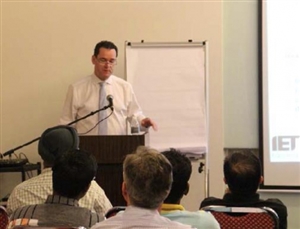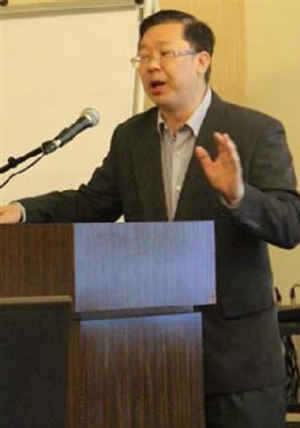
Colin Sellers, IET’s Manager, for Registrations and Standards started the day’s events by speaking about how to get professionally registered as a professional engineer on Saturday 7th February 2015 at the Armada Hotel, Petaling Jaya. He clarified many aspects of this professional registration and the various routes to gaining professional recognition. Being a Professionally registered engineer demonstrates to our peers and employers that we have made a commitment to maintaining, developing the knowledge, skill set and competence required to meet the engineering and technological needs of the modern world.
Colin is an MBA-qualified Chartered Engineer and Fellow of the IET. Colin achieved his Chartered status before he was 30 and became a Fellow when aged 38. He has held senior management and leadership positions in a variety of industries and organizations for over 25 years.
How to become a Fellow of the IET
Colin returned to deliver the final talk of the day by sharing some aspects related to Fellowship of the IET. Fellowship of the IET is awarded to individuals who have sustained high levels of achievement, for example through leadership, influence, senior responsibility, innovation, and professional service. Fellows of the IET are at the forefront of engineering, technology or cognate disciplines, which reflect the prestigious nature of the highest category of IET membership. In this talk, Colin touched on some of the criteria, the application process as well as the application form before taking some questions from the audience.
How Technology Solves Electrical Product Development Challenges

Modern technology is now allowing engineers to visualize design complexity in an easy way. It also has become a platform for other solutions to work seamlessly to handle non mechanical concerns. Alex Wong Chee Liong, the Technical Director for IME Technology Sdn Bhd., delivered the second talk of the day by sharing some key points on how technology can solve electrical product development challenges. Products which have embedded electrical content, including power systems, user controls, complex wiring, and harnesses can benefit from this technology, where 2D electrical schematic information can integrate with 3D design and improves collaboration for fewer product delays, more consistent and standardized designs, lower costs, and faster time-to-market. Electronic thermal management analysis enables designers to easily investigate the impact of cooling and design changes on component temperatures. This is ensuring product performance and safety; while reducing the need for costly prototypes, eliminating rework or delays, and saving time and development costs.